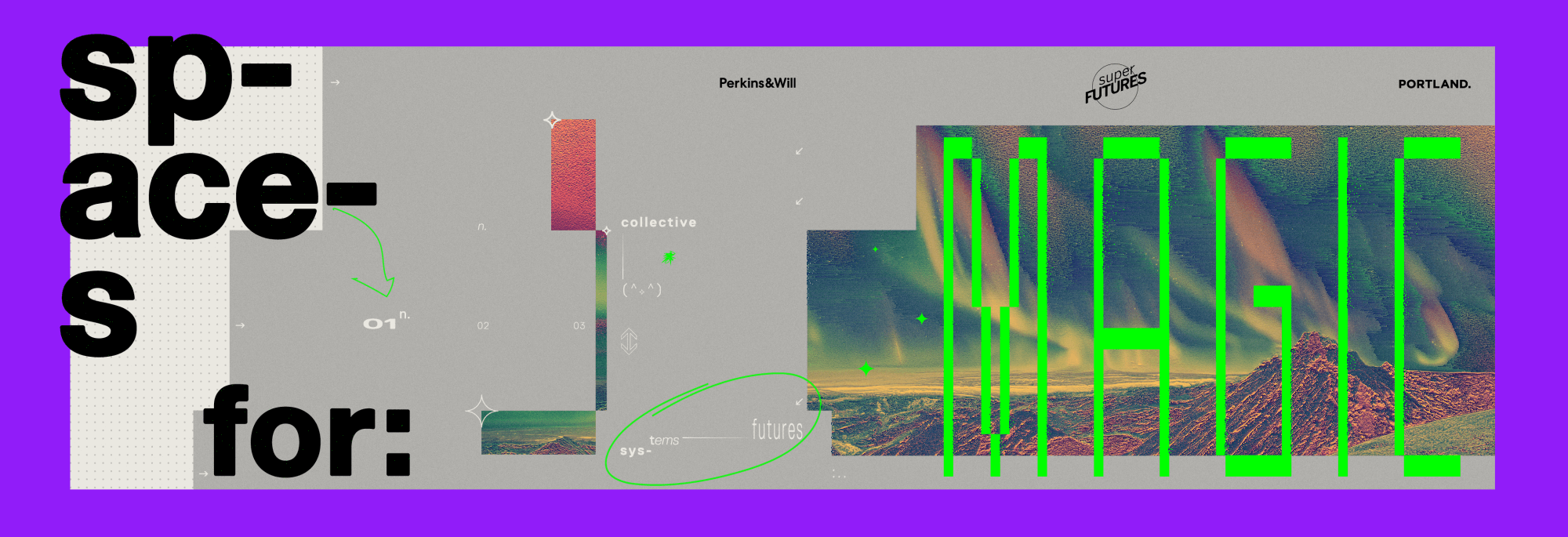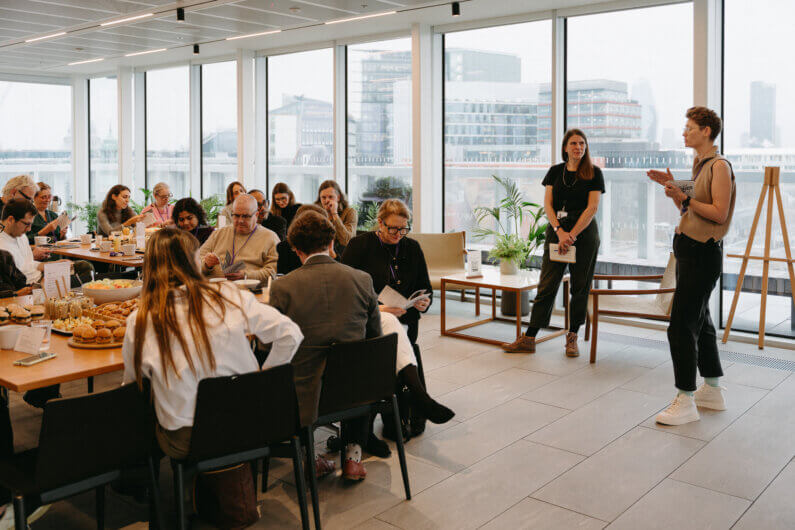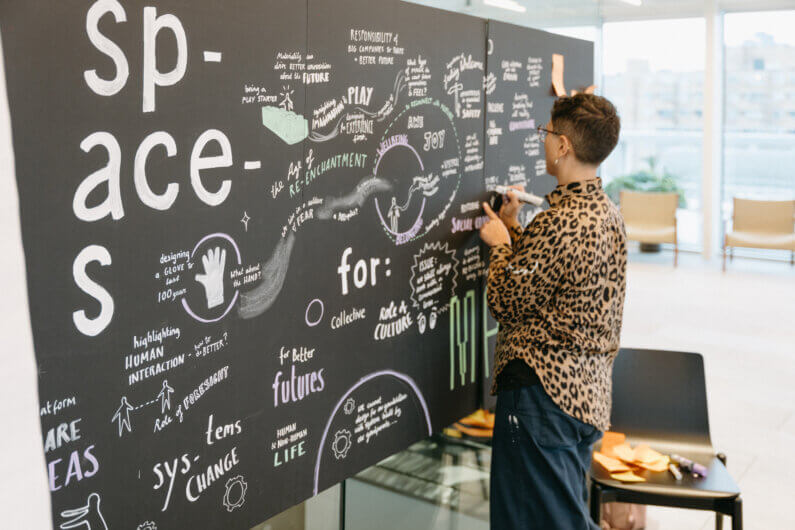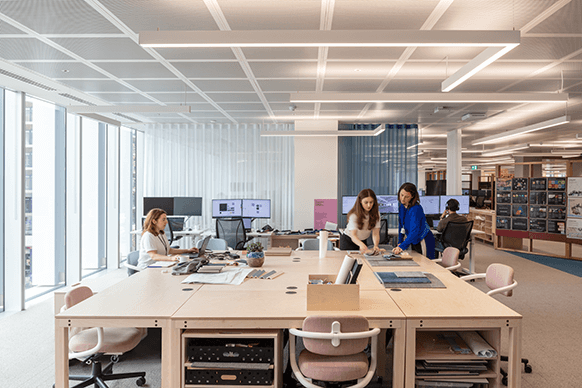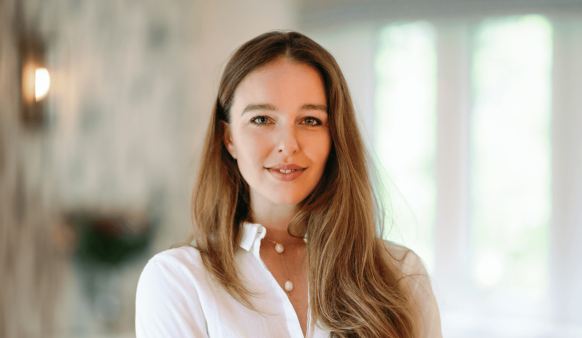At the end of 2024, a group of designers, curators, business leaders, and change-makers from across the built environment and beyond joined our London studio and Portland Design to discuss a topic that is consistently overlooked: the role of magic in the spaces we inhabit every day.
Launched as part of our partnership with Gem Barton and the Royal College of Art ‘s superFUTURES studio, and hosted with special guests Filipo Cuttica (LEGO) and Marie Stafford (VML), “spaces for: MAGIC” was the first roundtable in a new three-part series creating a much-needed platform for futures thinking in the design industry.
Read on for our calls to action from a memorable morning! And take a look at Temujen Gunawardena’s brilliant live illustrations mapping where the conversation took us.
Why do we need to talk about magic?
Whether interpreted as connection, joy, novelty, spontaneity, creativity, meaningful experiences, or simply space to just ‘be’… Magic is missing. We discussed how this absence stems from fundamental human needs not being met in the spaces we inhabit. In our fast-paced, tech-driven, commercialised world, we are neglecting our innate need for:
Connection:
We crave emotional connections and visceral experiences. Although digitally connected, we’re emotionally isolated.
Space for expression:
With constant stimulation, we have no space to pause or simply be bored. This space is where the magic happens.
Living in the present:
Distraction and busyness are rewarded. We’ve forgotten how to truly engage with the now.
As Marie reminded us so powerfully: “We are living in an age of disenchantment.”
HOW do we create more magic?
A few reflections stood out as clear calls to action from our morning discussing spaces for magic. Could this be the start of a ‘manifesto for magic’?
Use the built environment as a catalyst for creativity:
Thoughtful design can ignite imagination, creativity, and a sense of wonder. As Filippo reminded us, drawing on his experience at LEGO, the built environment can be a powerful “play starter”.
Prioritise human tools:
In an AI-driven world, we need more spaces that feel deeply human—built by people, for people—to foster collective belonging and shared purpose.
Design for experience first:
As Filipo invited us to explore, how can we create spaces that give people agency and the freedom to carve their own “desire paths”?
Don’t lose sight of the horizon:
Both literally and figuratively, horizons inspire big thinking. If so many of us, including our key decision-makers, spend our days in dull, overcrowded workspaces with limited views out, how can we expect big ideas and inspiration? We must design environments that support rather than hinder us, in imagining radically different futures.
Celebrate public art:
Art invites people to pause, connect with their surroundings and other people, offers a welcome, a meeting point, and experiences of awe and joy. In a world where public realm is increasingly precious, we need more of this.
Fund research:
Whether through grants of time or money, we need to better understand how spaces affect emotional well-being. What are the new metrics we need to follow to measure their impact and their joy?
Design for safety and inclusion:
We can’t experience magic if we don’t feel safe and included. We must prioritise designing for everyone, especially marginalised communities, if we are to truly deliver ‘spaces for magic’.
Gather with community more often:
Magic happens when diverse perspectives and multidisciplinary groups connect. This first ‘spaces for:’ event was proof.
…which leads us to the part where we announce that our next event, spaces for: COMMUNITIES, is taking place on 19th March, where we’ll be discussing the connected topic of community and its role in shaping better places for future generations.
